I tightened the laces of my new hiking boots and adjusted the length of my poles. I hitched the belt of my backpack and set out with Fabio to walk eighteen miles through the Guadarrama Mountains to the historic city of Segovia. We needed to put in a high-mileage day before our hiking adventure in the Pyrenees in September. If we arrived in Segovia in one piece, Fabio would be rewarded with cochinillo, the hallmark of the city’s cuisine―baby pig.
We could have chosen to travel to Segovia in a bus or train with air conditioning and padded seats. Instead, we alighted from a bus near a ski lift in the mountains and stepped onto the trail. After an hour of walking, we came to a fountain spouting cold water, Puerto de Fuenfría, the dividing line between the provinces of Madrid and Segovia. Here we merged onto one of the three ancient paths near Fuenfria, a stone road that Roman Emperor Vespasiano had built between 69 and 79 A.D. to transport troops, livestock, and trading supplies.

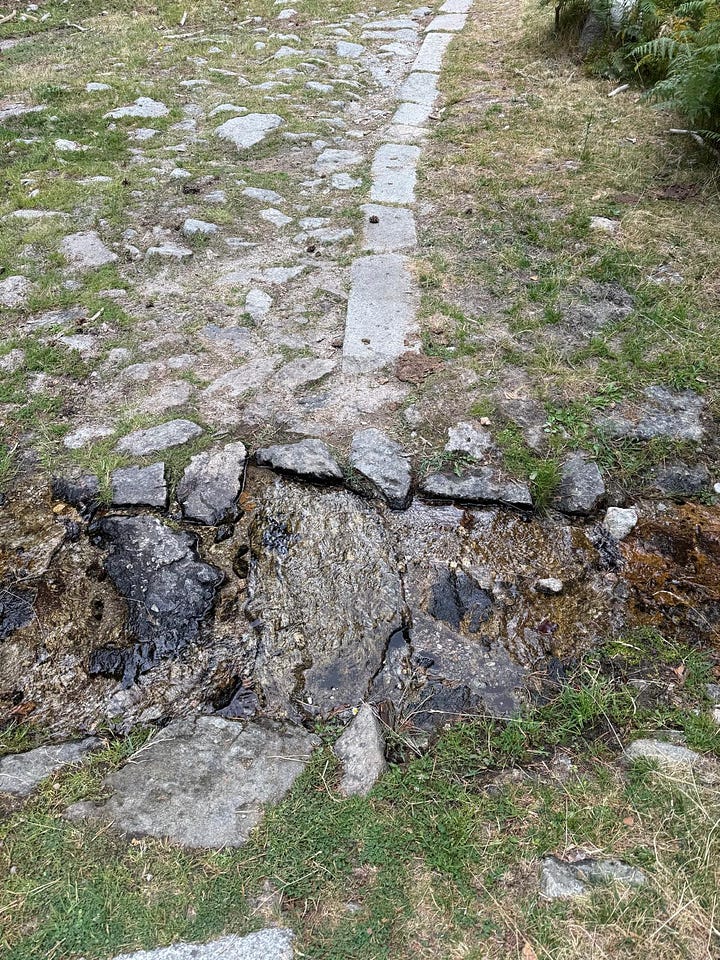
In a quarter of a mile, we joined the Old Segovia Road dating to the Middle Ages. Now pilgrims walk it as a branch of the Camino de Santiago (the Way of Saint James), to the saint’s shrine in the northern city of Santiago de Compostela. Last year, a little over 499,000 pilgrims walked, biked, rode horseback, or journeyed for spiritual reasons along one of the forty-nine routes in Spain to the cathedral.
Fortunately, we weren’t going there. Santiago was 599 kilometers away.
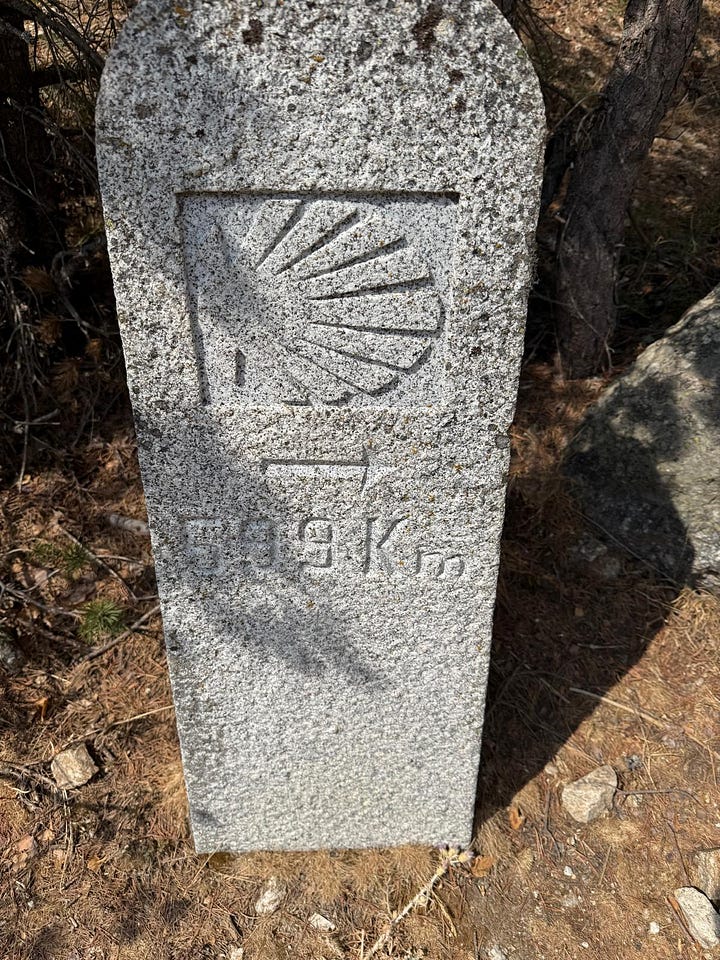
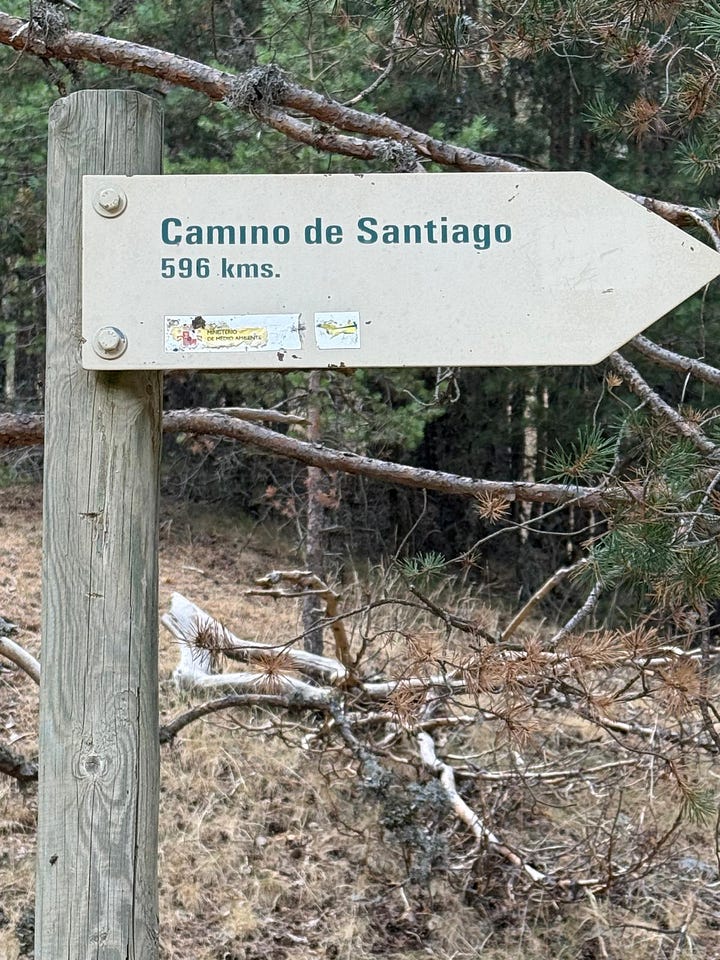
We headed down the rocky road and walked across another streambed that cut through a shaded grassy area. Had we not had a long way to go, we would have lingered to admire the scenery.
Shepherds eleven centuries ago until the early 1900s also found the place restful. They moved their flocks along the Roman road away from the summer heat from the valley of Segovia to find water and pastureland here.
A mile down the road, we came across the ruins of Fuente de la Reina, a fountain that at one point was said to spill forth the best water in Guadarrama. Nowadays, water trickles through. At this juncture, King Philip V, the first Bourbon to rule Spain, decided in 1721 to restore the Roman Road and, from there, make the third passageway, the Bourbon Road. This headed south to access the palace he was building, La Granja. He hauled in a lot of materials because he had planned the gardens to replicate those at his childhood home―the château of Versailles.
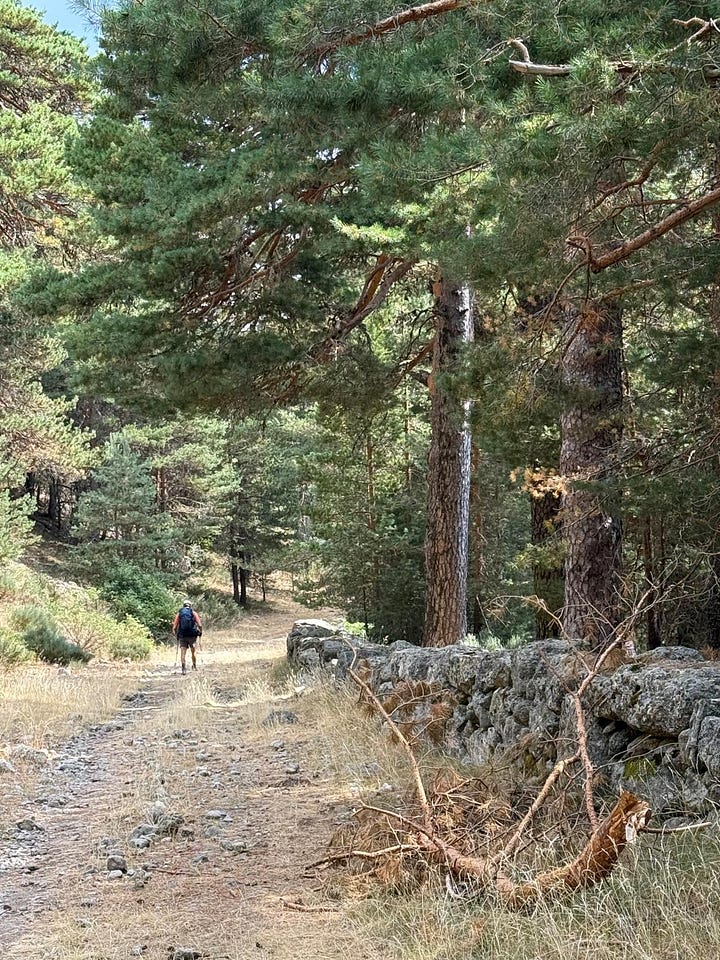

Ten minutes down the Camino de Santiago, we crossed paths with a group of twenty Spaniards, chatting and laughing as they strolled. Like hearty Spaniards, they veered right toward a restored seventh century convent-cum-restaurant for a feast of veal, beef, ham, sausage, white beans, and salad. They’d wash down the repast with various wines. We pitched left following the sign to Segovia, expecting to eat our cheese sandwiches by the side of the trail somewhere after the halfway point.
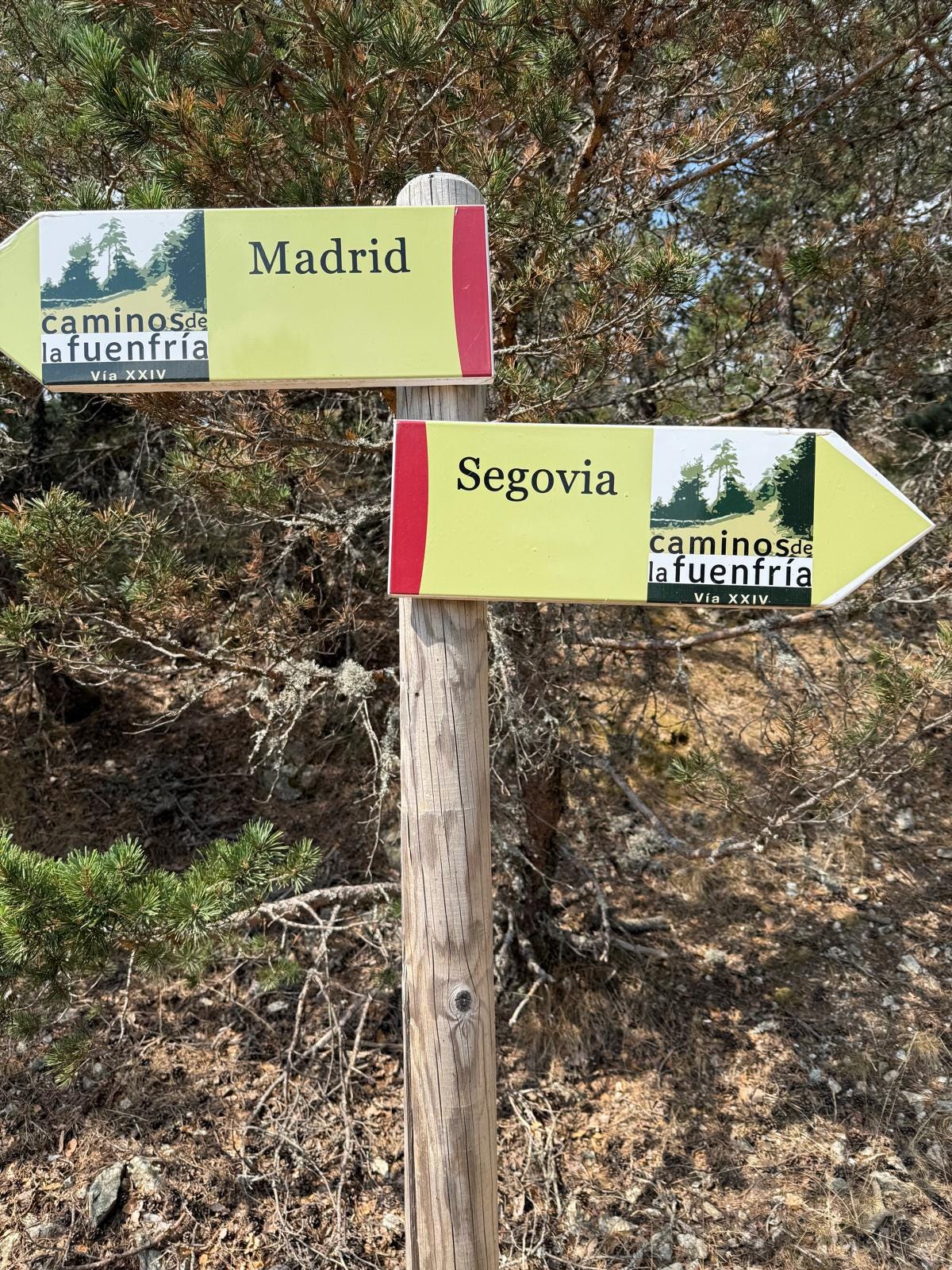
We ambled through the forest in rain and hail looking for a lunch spot. We had no fear of wild animals because when the Spanish royalty in the sixteenth century decreed the forest their private hunting grounds, they wiped out the Iberian ibex, roe and fallow deer, wild boars, badgers, weasels, and foxes. Besides, Fabio was going to get his meat for dinner, provided we made it.
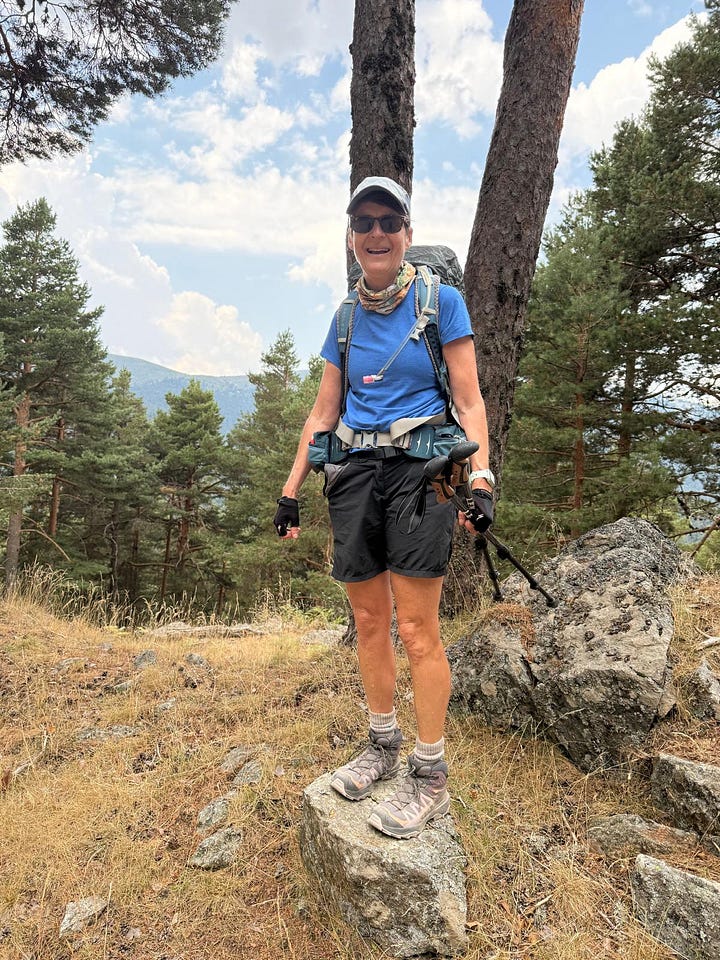
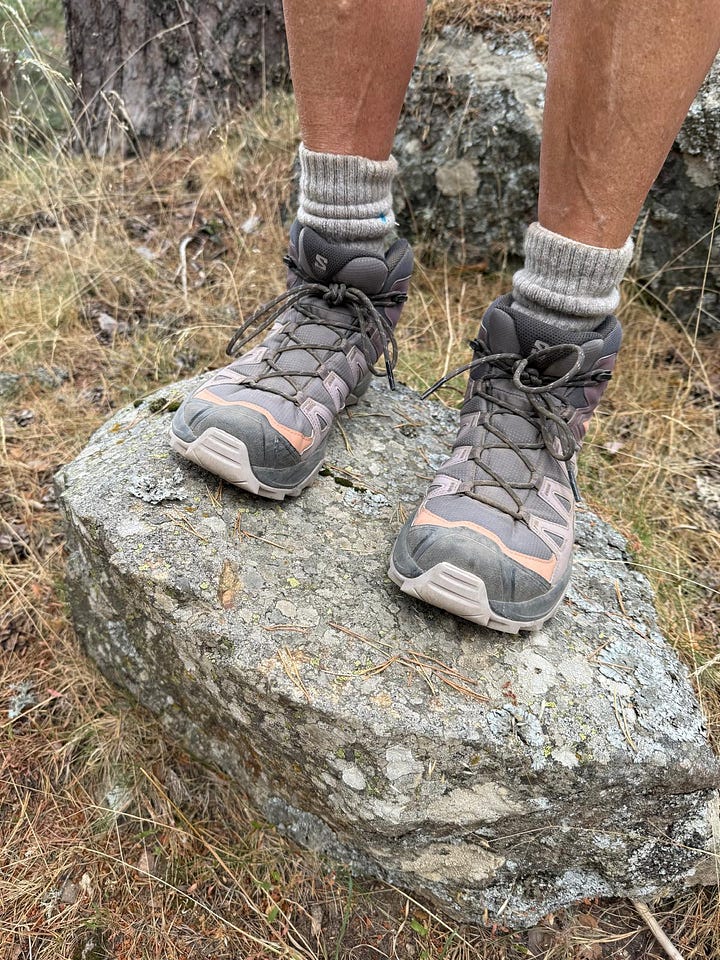
Once out of the rainy forest, we spied our destination―the spire of Segovia’s cathedral. To get there, we’d have to walk six miles over a parched mesa. We pulled off the trail and sat on a granite boulder to eat our sandwiches, grapes, and a couple of handfuls of nuts. We pondered what was coming.
We slogged over the dirt road in ninety-five degree heat. We passed a jail and train station. We crossed under a freeway. The spire inched closer.
When we got to the stone arch Gate of Madrid, which had welcomed travelers to Segovia since 1705, we figured we could soon throw down our packs. Google Maps showed us the cathedral was still thirty minutes away. We trudged on.
Finally, we rounded a corner to see the Roman aqueduct framing the historic city center. Though we’ve gasped at the arches of this architectural wonder before, the structure, built in the first century, took our breath away (not exhaustion).
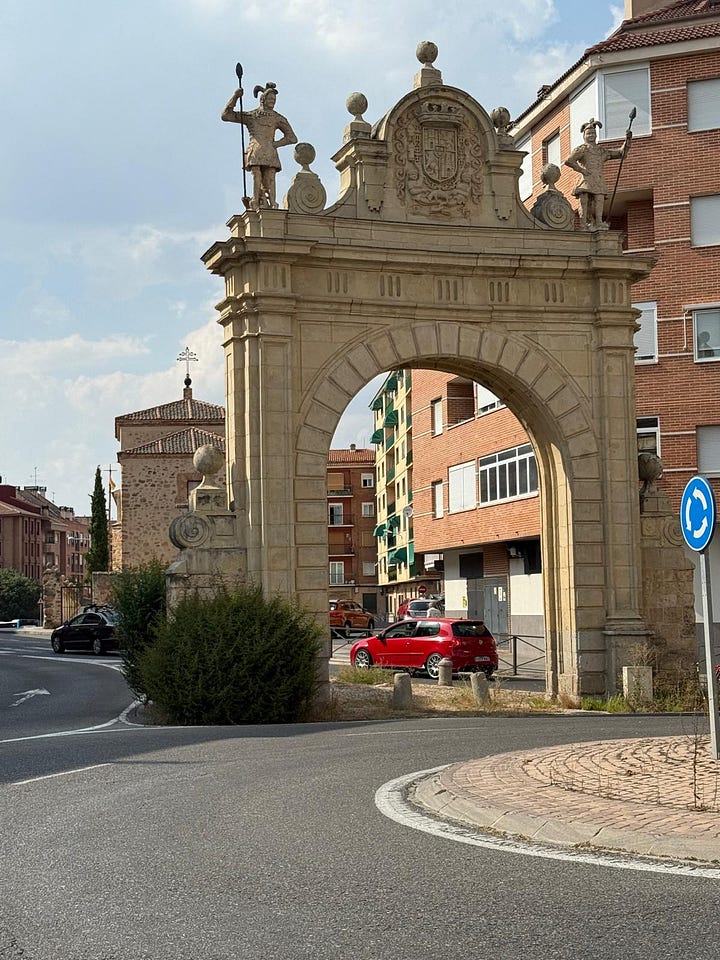
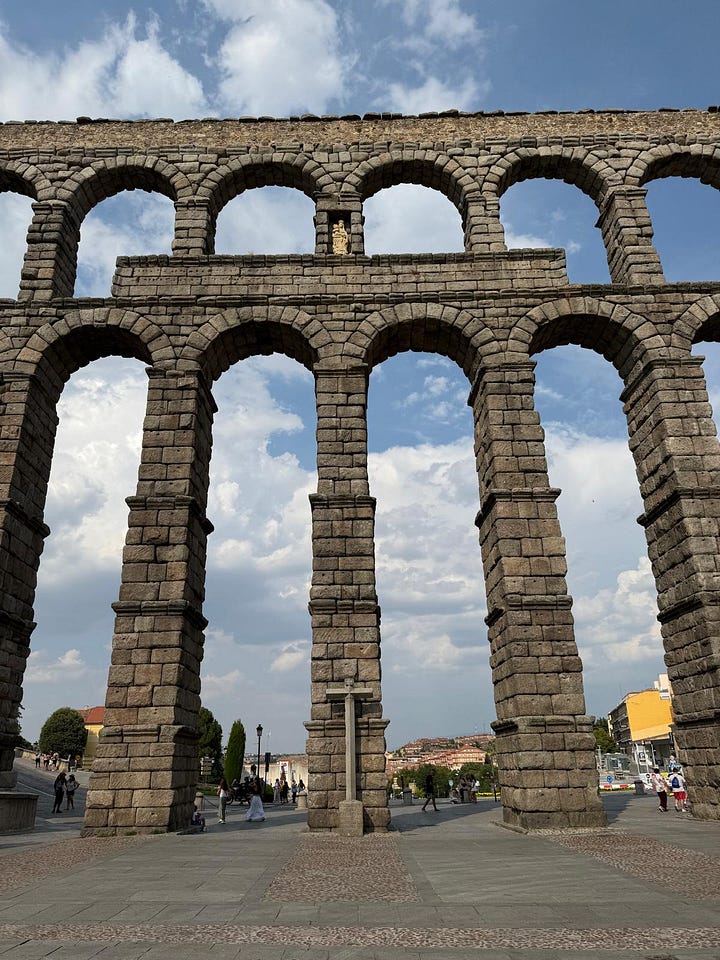
Our prize came at dinner. Fabio had chosen a restaurant famous for cochinillo. To make this dish, the restaurant buys pigs grown on special farms. Farmers kill the pigs when they are less than three weeks old and weigh between nine and fourteen pounds. The farmer fastens a tag on the right hind foot guaranteeing its strict production standards. Cooks place the piglet in a clay casserole, immerse the critter in butter and water, and cook it for three hours. They slide it onto a serving dish. Waiters bring the splayed animal to patrons’ tables and cut the meat using the rim of a plate to demonstrate its tenderness. Usually, waiters serve a whole pig. Fabio gingerly ordered a portion, his annual dose of pork.
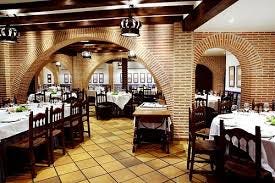
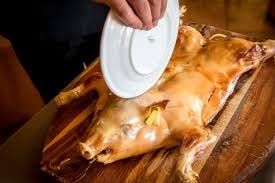
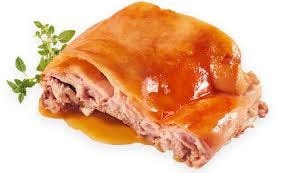
I enjoyed a plate of roasted vegetables, the only vegetarian entrée. A glass of crisp verdejo took away the aches in our legs and hips and slid us into relaxation instead of exhaustion.
In one day, we had walked the same route as Romans from the first century, pilgrims beginning in the ninth, shepherds from the eleventh, nobility prowling the forests in the sixteenth, and a Bourbon king putting up a palace in the eighteenth. We, as millions of others have done before us, trekked through Spanish history in a day, ending back at the Romans where all roads began.




What a generous wife you are-hiking all that way for PIG! I hope the pig was as delicious as they proclaim. Glad they at least had some vegetables and wine for you to satiate yourself. Hooray for non-blister-producing new footwear! Thanks for another enjoyable tale from the trail!
Well hooray for those vegetables at the end of your trek! I never thought I would see the day that you wrote about roasted pig, but it just goes to show what a great writer you are that you can write so beautifully about your epic hike and it's piggy rewards at the end without being personally motivated by the squealer!